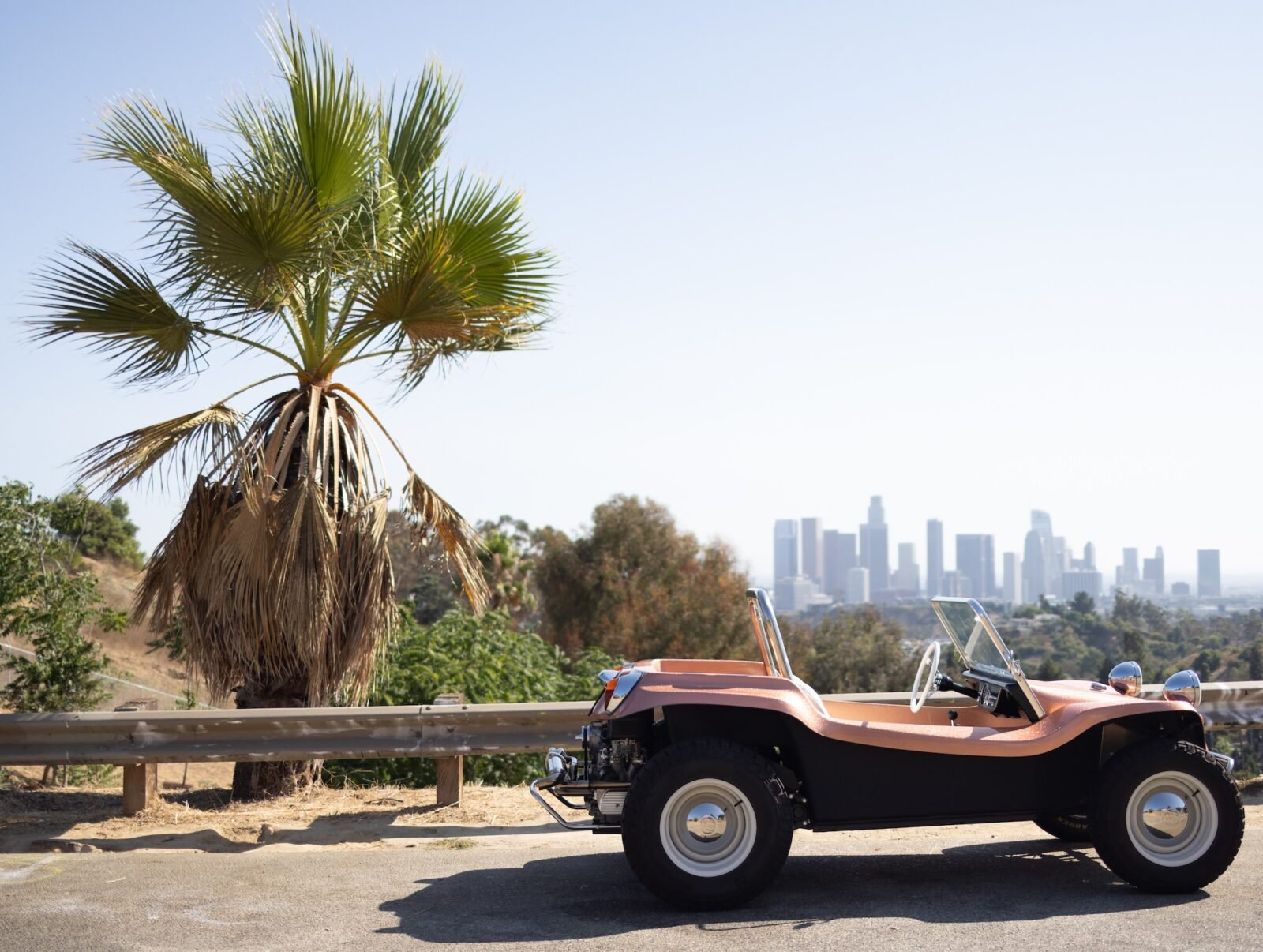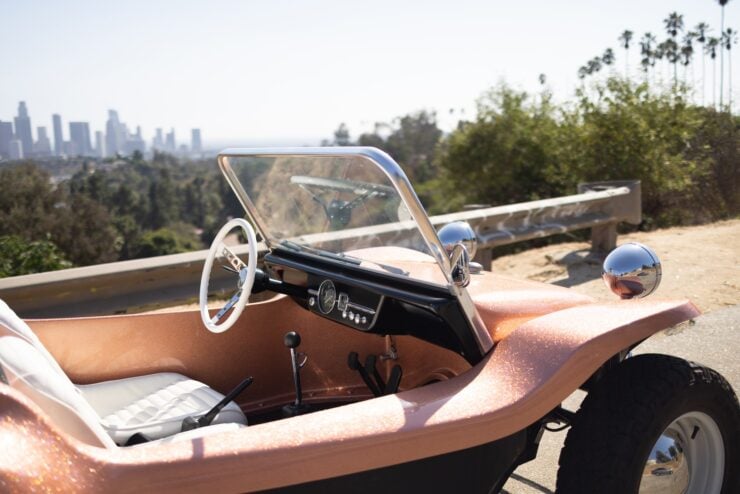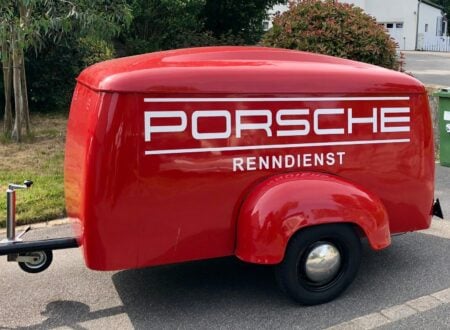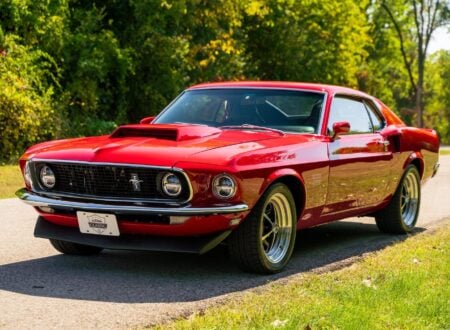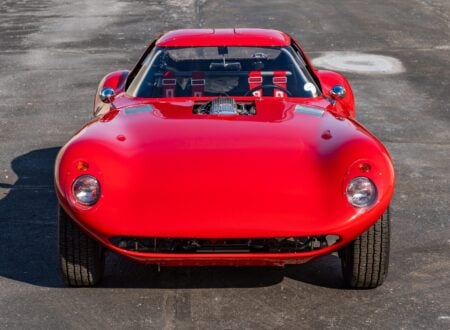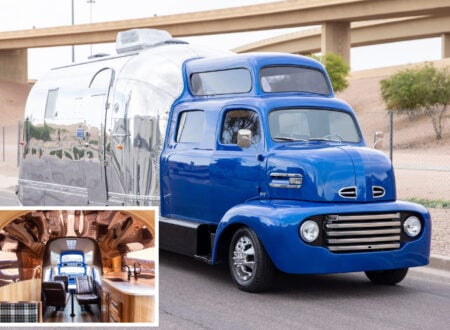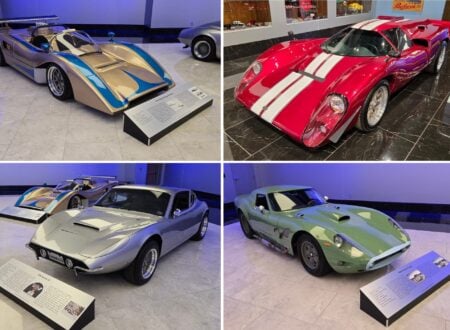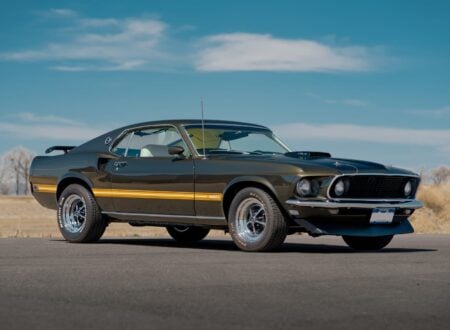Somewhere in Los Angeles, in an older building behind a nondescript exterior, lies a secret Meyers Manx facility where there can be over a dozen examples of the Manx on any given day, as well as other historically significant cars, being kept in storage.
I was ushered into the building by Brian, a friendly American who was more than happy to get talking about the history of the Meyers Manx, and about snowboarding, before showing me over to the metal flake Manx that I would be borrowing for a few days.
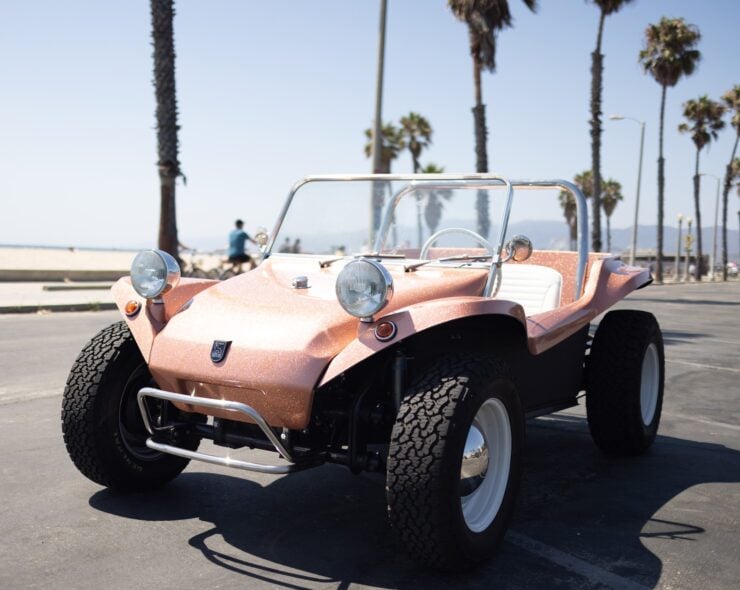

As luck would have it, I happened to be in LA after attending the Pebble Beach Concours d’Elegance and some other events up the California coast a week earlier. A series of Instagram messages from Michael Potiker, a friend at Meyers Manx, followed – the end result being Brian handing me a set of keys to a buggy and some instructions on how to best fill the front-mounted tank with 91 octane gas without spilling any on the paintwork.
I lowered my 6’2″ frame into the buggy, a surprisingly quick feat compared to most vintage roadsters, and set off to meet Stan Evans, an old friend and a celebrated automotive, motorcycle, snowboarding, and celebrity photographer who was curious to see the Manx for himself.
Stan is built like an NFL linebacker, standing an inch or two taller than me, so we must have looked like quite the pair in the pink/peach metal flake Manx burbling along the California coastline looking for a good spot to take some pictures – with the mandatory palm trees, beach sand, and Baywatch-style lifeguard tower all in the background of course.
We ended up at El Segundo Beach somewhere south of the more famous (and far more crowded) Venice Beach precinct. With the photographs taken we went for dinner, the sun went down and darkness fell, and I soon realized that I was going to need to drive the Manx across LA to my hotel in Hollywood in the dark, down the famously busy 405 freeway.
With the bug-eye headlights on and Google Maps bouncing around in front of me we made it back to the hotel in the cool night air, where the valet parking attendants looked at me with a mix of incredulity and no small amount of confusion. They were used to parking G Wagons, Maybachs, and Bentleys, and it seemed none of them had seen a Manx in person before.
After a brief discussion it was decided that the senior valet would sit in the passenger seat, I would drive, and he would show me into the hotel’s private basement carpark. This would be the system we used each day when I returned, by the end the valets were all calling me “the buggy guy” and I have to say, I didn’t hate the nickname.
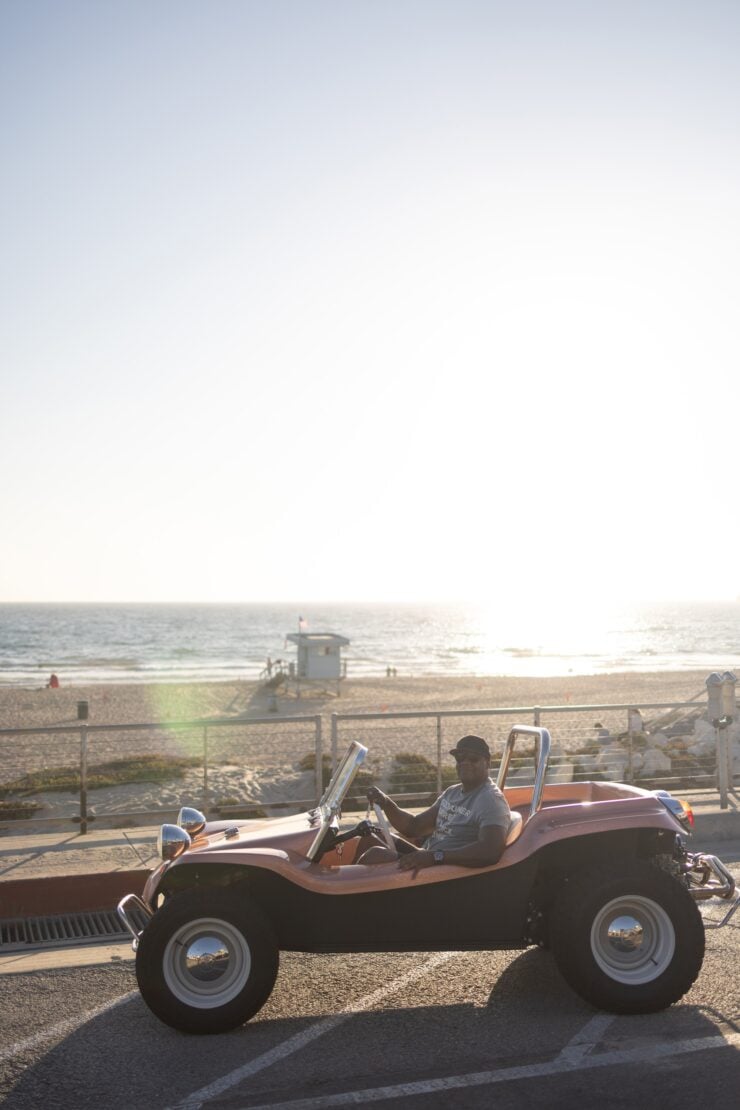

I had a plan to meet the folks at The Bike Shed the following day, an LA institution for motorcyclists, so I climbed into the Manx and set off with absolutely no awareness of just how complex it can be to navigate across LA in the daylight hours.
After what felt like a particularly protracted Lord of the Rings crusade I arrived at The Bike Shed and parked outside, the Manx immediately drew a crowd. It often did this I noticed, when parked, when getting fuel, when putting money in a meter, or even just when stopped at a red light. It’s not a car for the shrinking violet.
After catching up with Bike Shed co-founder Dutch and taking full advantage of the weekend roast they had running, I set off in the Manx once again, this time with my friend Kiki in the passenger seat who wanted to show me the way to Elysian Park – said to be one of the best places in the city to take pictures of cars.
She wasn’t wrong, with the LA downtown skyline in the background and overlooking Dodger Stadium, all while surrounded by palm trees, it’s one of the most scenic locations I’ve found in the country so far.
With the photos taken Kiki decided that we should do the only logical thing a person can do when they have a dune buggy in Los Angeles on a sunny weekend – go to a Hollywood pool party. We set off back across town to her friend’s mid-century apartment building and its elegant private pool that seemed to have more friendly dogs around it than people – a major positive.
As we watched the sun slowly go down we talked about dogs and snacks and Meyers Manx dune buggies until, with recent memories of driving across town at night on the 405, I said my goodbyes and made an exit so I could get back to the hotel before nightfall – it was time to go visit my valet friends, apply some after-sun lotion, and see if I could find that hidden Star Wars Cantina-style bar in Hollywood that I had been hearing about.
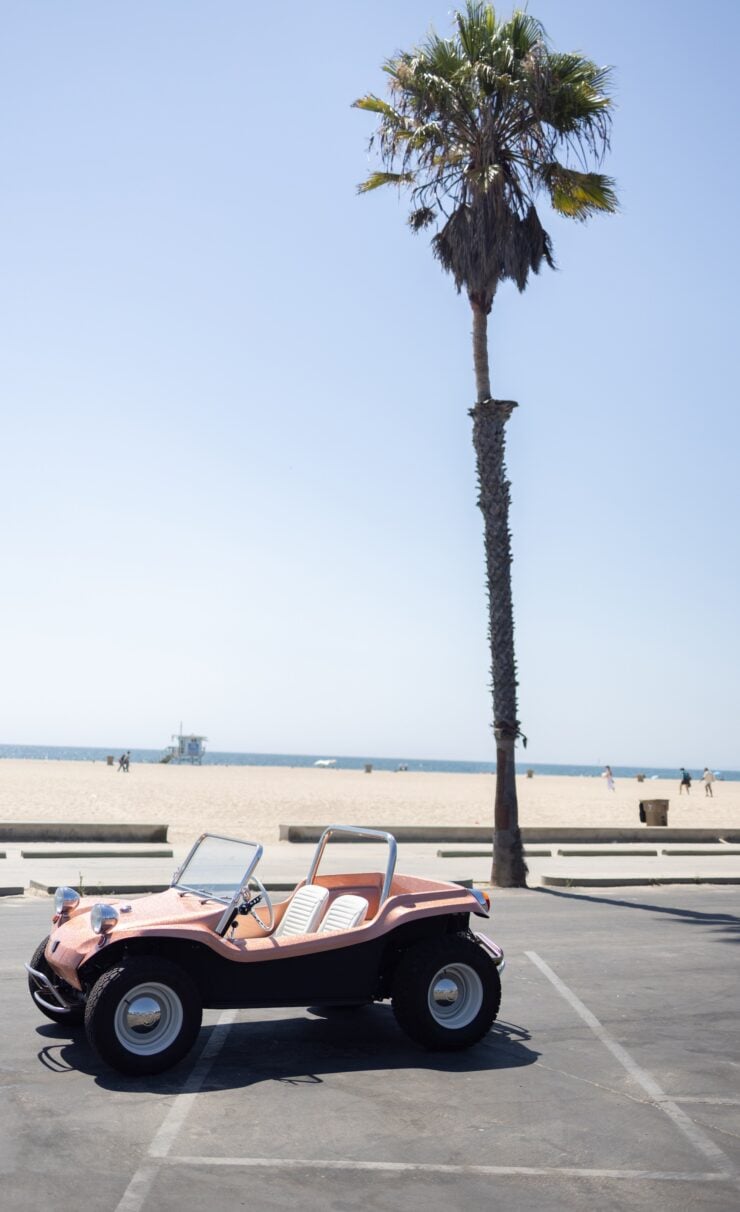

The next day I would return to the older building behind a nondescript exterior where I had collected the Manx to meet Brian and hand it back. It was a moment of genuine sadness after three days of adventures, conversations with strangers, posing for pictures, and answering countless questions about the Manx.
It may not be a car for a shrinking violet but it does have a way of bringing out the best in people – adults and kids, strangers and friends. It turns whoever is driving it into a celebrity of sorts while they’re behind the wheel. It may not be the perfect vehicle for all situations, but in California on a sunny summer’s day, it’s the only thing I want to be driving.
The Origins Of The Meyers Manx
The Meyers Manx is notable for a number of reasons, but perhaps none more so than the fact that it’s the only automotive design that became a true icon without having originated from a major manufacturer.
There are many vehicles we can all (likely) agree on as being automotive icons, designs that are recognized by non-car people and car people alike due to their distinctive looks and the place they hold in history.
Some good examples are vehicles like the Willys Jeep from WWII, the Porsche 911, the Beetle, the Mini, the Land Rover, the Mustang, the Countach, and the Meyers Manx – perhaps more broadly known simply as the “dune buggy.”
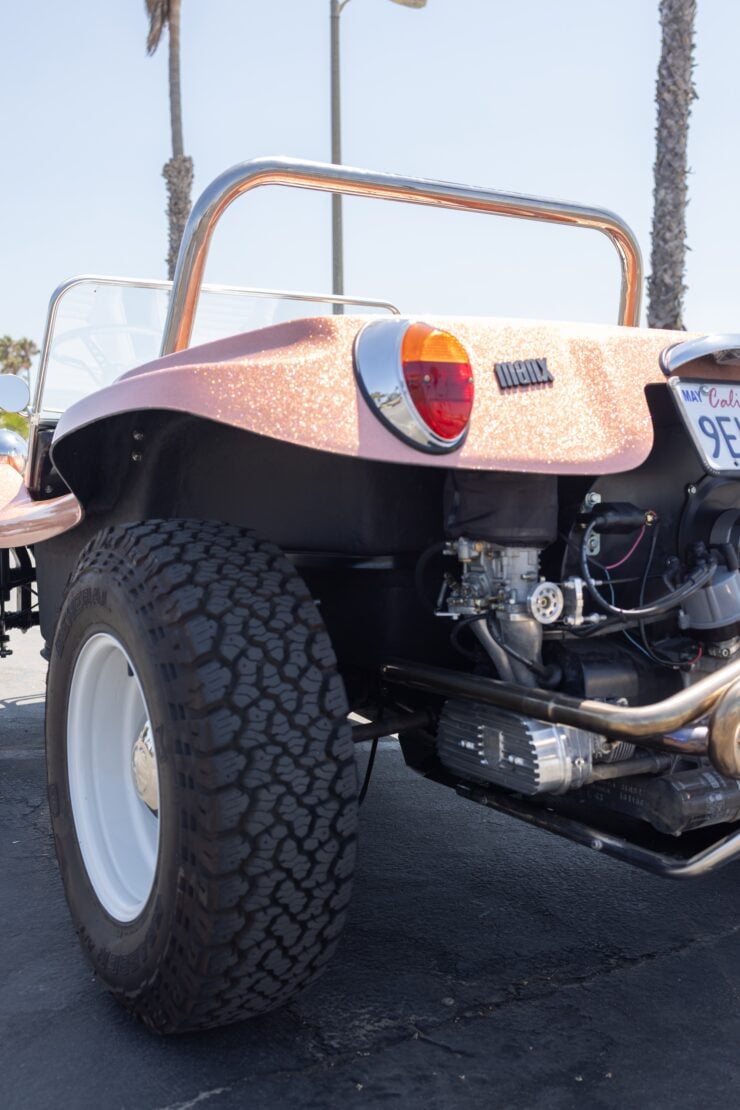

The Meyers Manx started out not in the design studio of a major marque in Detroit, but in the Newport Beach garage of a Californian engineer, artist, sailboat builder, and surfer named Bruce Meyers.
He had become an expert in the design and construction of fiberglass sailboats, and he turned this expertise toward building a new kind of dune buggy that would be a generational leap forward over the heavy and awkward road-car based buggies that were then commonplace.
His first design used a fiberglass body as a monocoque chassis, one of the first uses of composite materials to develop a load-bearing structure. To this structure he added the front suspension, engine, and transmission from a VW Beetle.
Where Did The “Meyers Manx” Name Come From?
He named his creation the Meyers Manx, taking his own surname as the marque name, and using the name of the distinctive Manx cat from the Isle of Man, with its very short tail caused by a genetic mutation. The agility of the Manx cat and its short-tailed appearance made it the perfect symbol of Bruce Meyer’s new four-wheel creation.
It was soon realized that a full fiberglass monocoque body wasn’t going to be cost effective, and so he kept the styling but modified the underlying design to now consist of a fiberglass body fitted to a shortened VW Beetle platform.
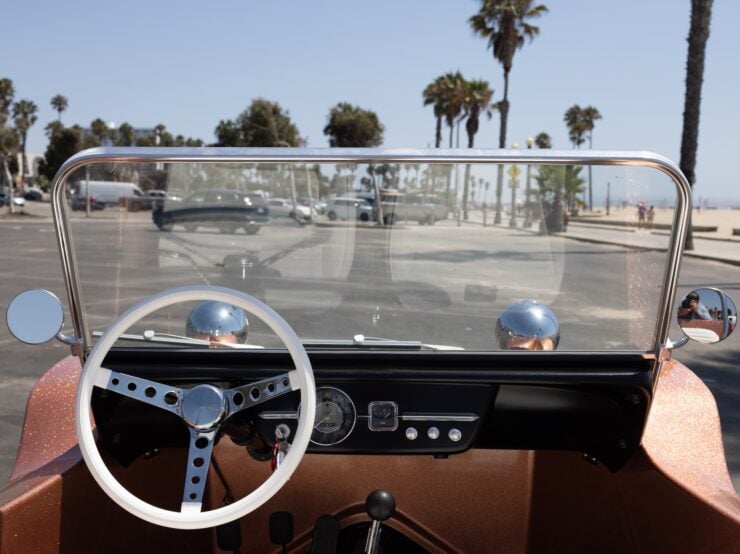

This new method allowed the Beetle’s chassis, suspension, brakes, engine, transmission, and steering to all remain in place, vastly simplifying the kit-building process for buyers. It had the added benefit of making it all far more affordable, as secondhand Beetles were commonplace and remarkably cheap to buy in the US at the time.
Once Bruce Meyers had the new design perfected he began offering kits for sale in the back of magazines, and sales were brisk. Before he knew it, Meyers Manx buggies were everywhere – he had a blockbuster on his hands. He developed a number of different designs, including the Meyers Resorter, the Meyers Tow’d, and the Manx SR, but the trusty original Manx always remained the number one seller.
Sadly, it wasn’t long before the copycats began to emerge – many early copies were literal copies of the Manx design, others were exceedingly similar but changed just enough to avoid legal jeopardy. Bruce’s kits were always the best quality, but he was being undercut on price and sales began to suffer.
The End – Then A New Beginning
B. F. Meyers & Co. would cease operations in 1971. Many thought that was the end of the story, but as it played out it was merely the origin story. In the year 2000 Bruce Meyers would revive the Meyers Manx due to surging demand for authentic new kits, and the subsequent demand for spare parts.
Demand was strong, as it had been all those years ago when the Manx first debuted, and he soon had a number of related models in production that were available as either kits or as turnkey vehicles. The company flourished, reestablishing itself as the authentic source of the Manx design.
In 2020 Bruce and Winnie Meyers would sell the company to a venture capital investment firm called Trousdale Ventures. Bruce was 93 years old at the time, and after length conversations with Phillip Sarofim who heads up Trousdale Ventures, he felt confident that the company was in good hands.
It now seems clear that Bruce was right. In the handful of years since the acquisition Meyers Manx has grown significantly, still offering both kits and turnkey cars but now focussing on a series of future designs, including a state-of-the-art 100% electric Meyers Manx.
Earlier in 2024 Jennifer Flake and Bill Strickland were announced as Co-CEOs of the new company, bringing in a combined 60+ years of automotive experience. It’s now their mission to grow the company further while finding a balance between the classic-era Manx and the electric future.
The good news is that you can order a brand new classic Meyers Manx today using their online configurator here, just be warned, it can get a little addictive. It’s also possible to reserve yourself an electric Meyers Manx 2.0 EV, and configure it online here.
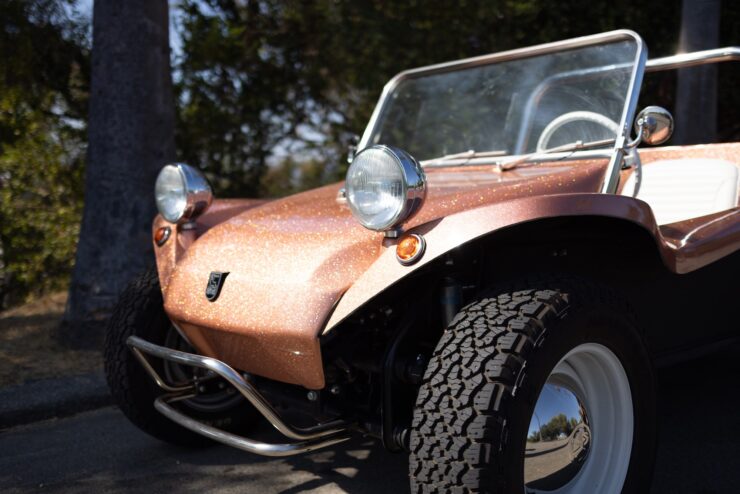
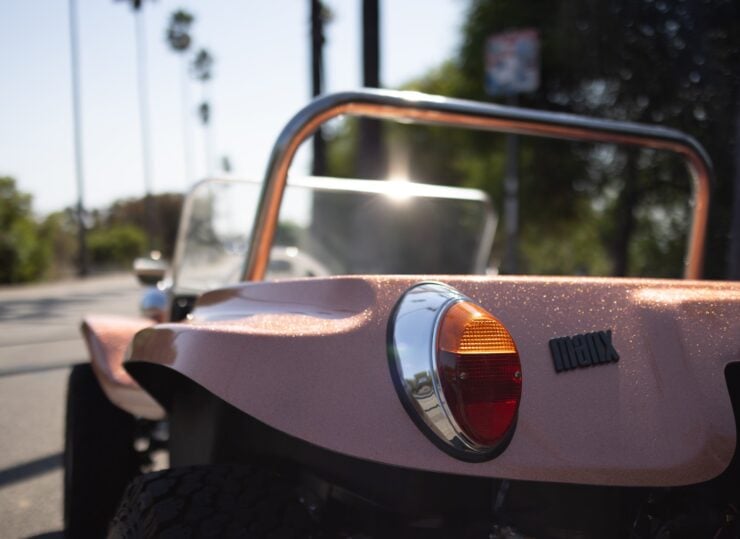
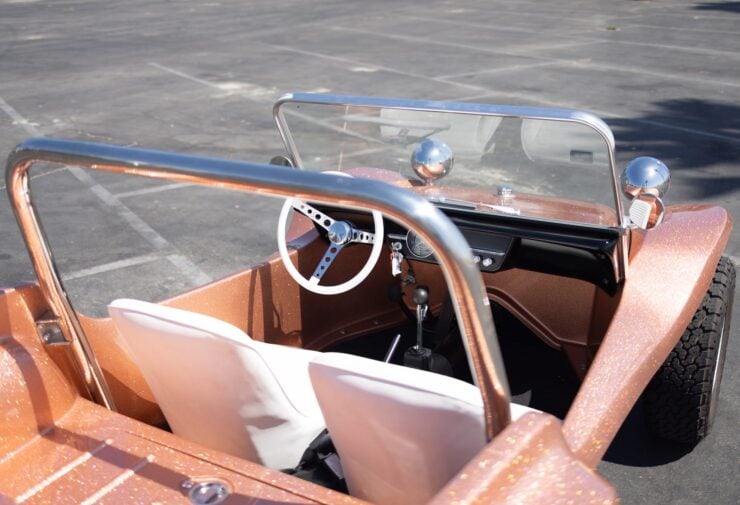
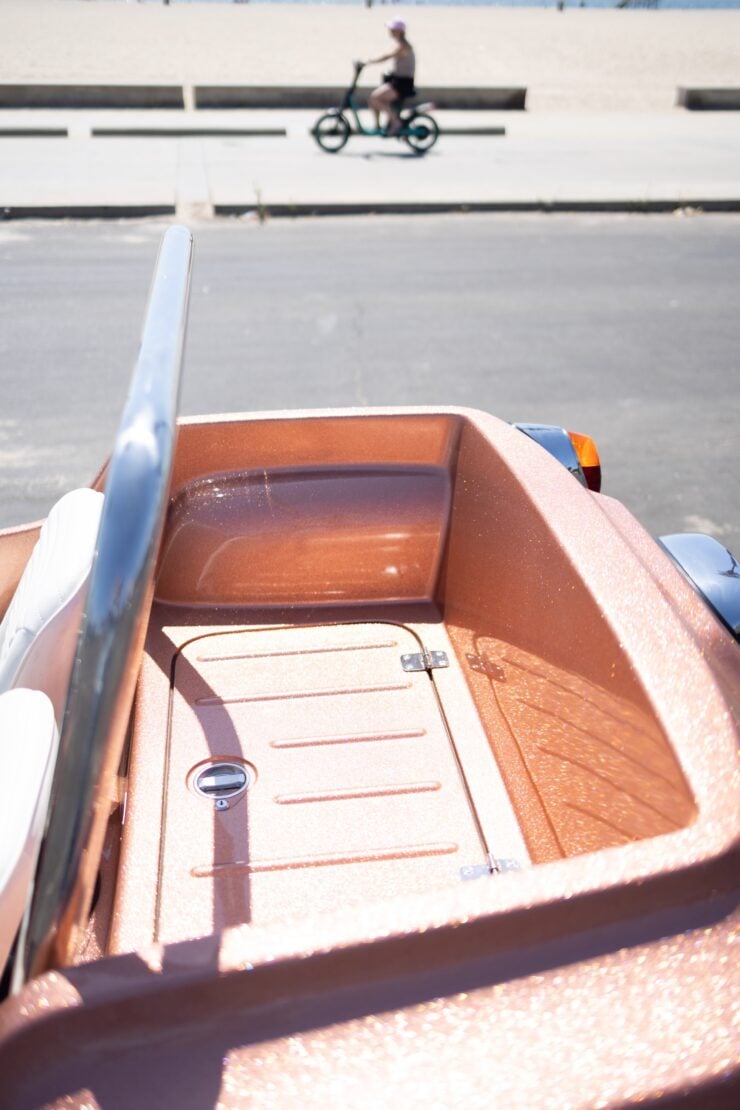
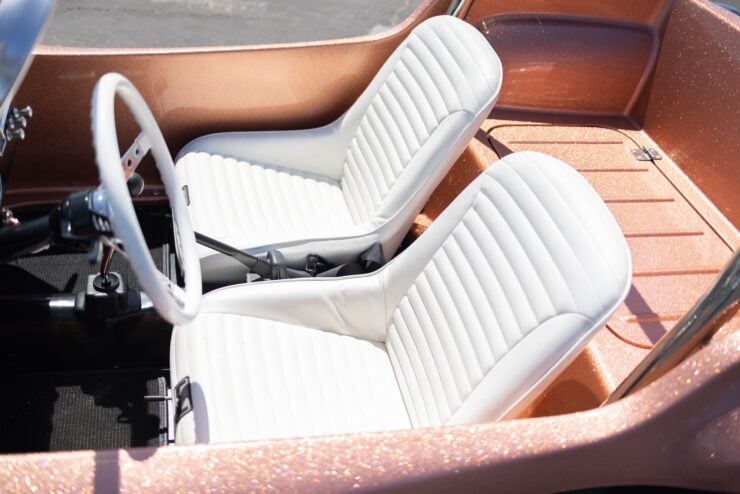
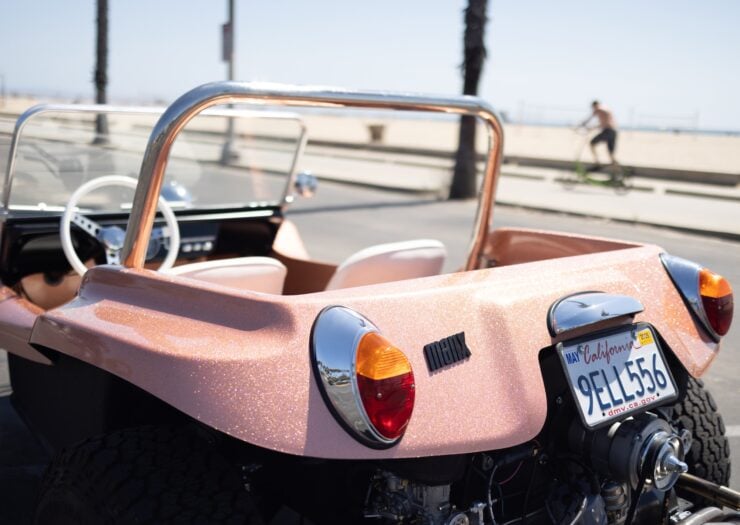
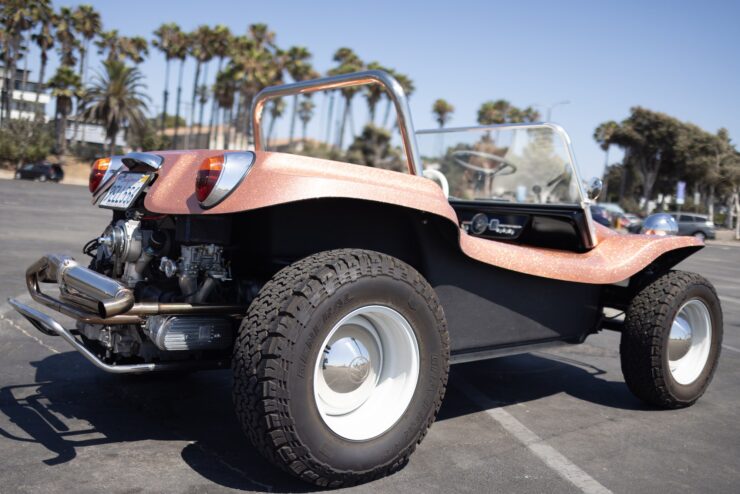
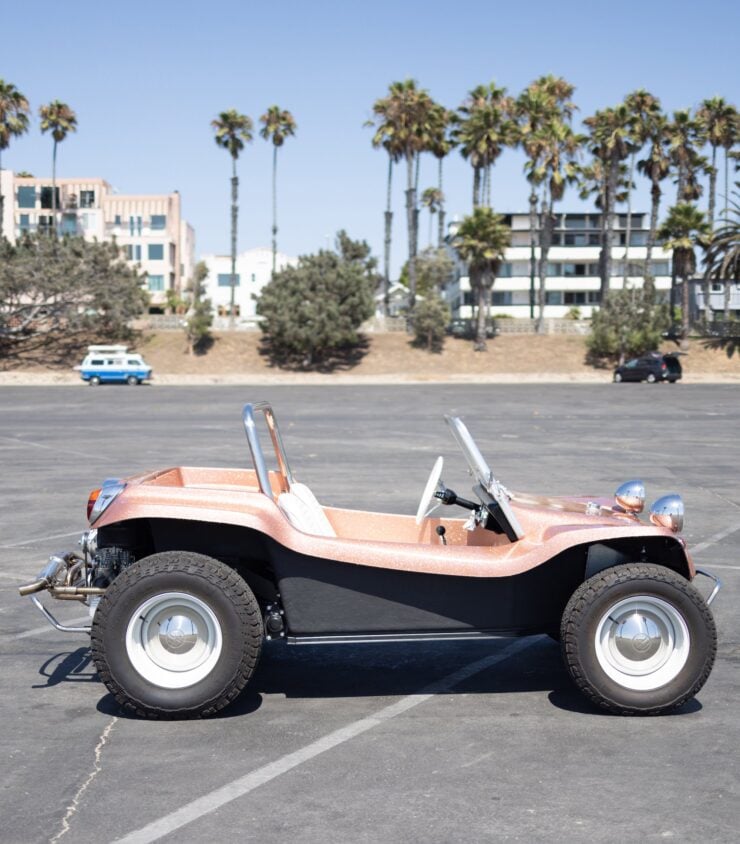
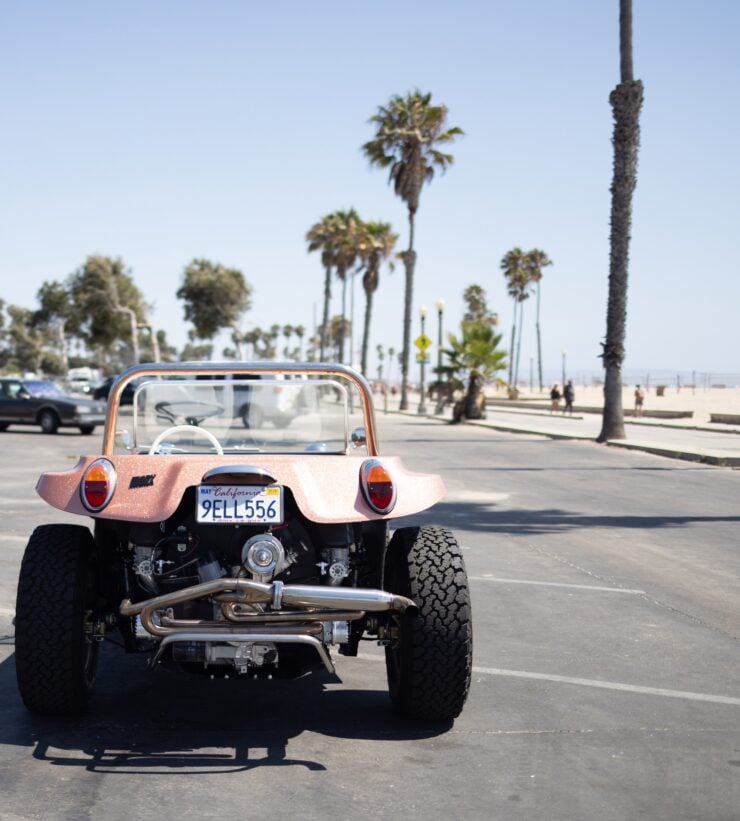
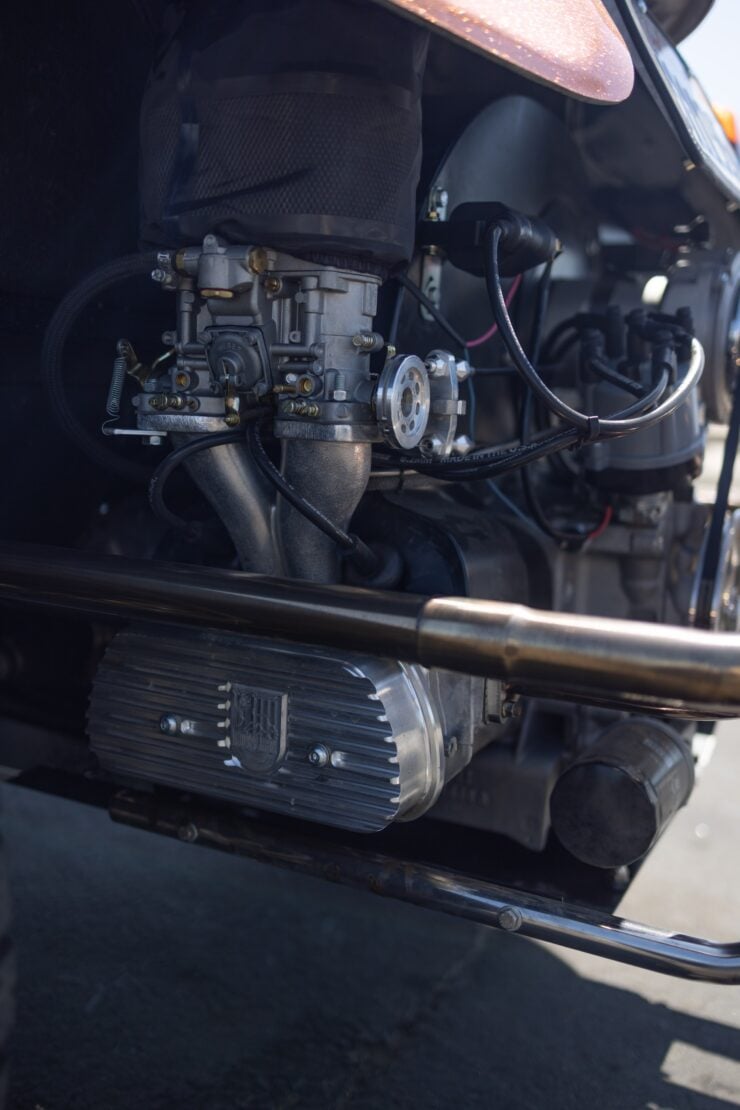
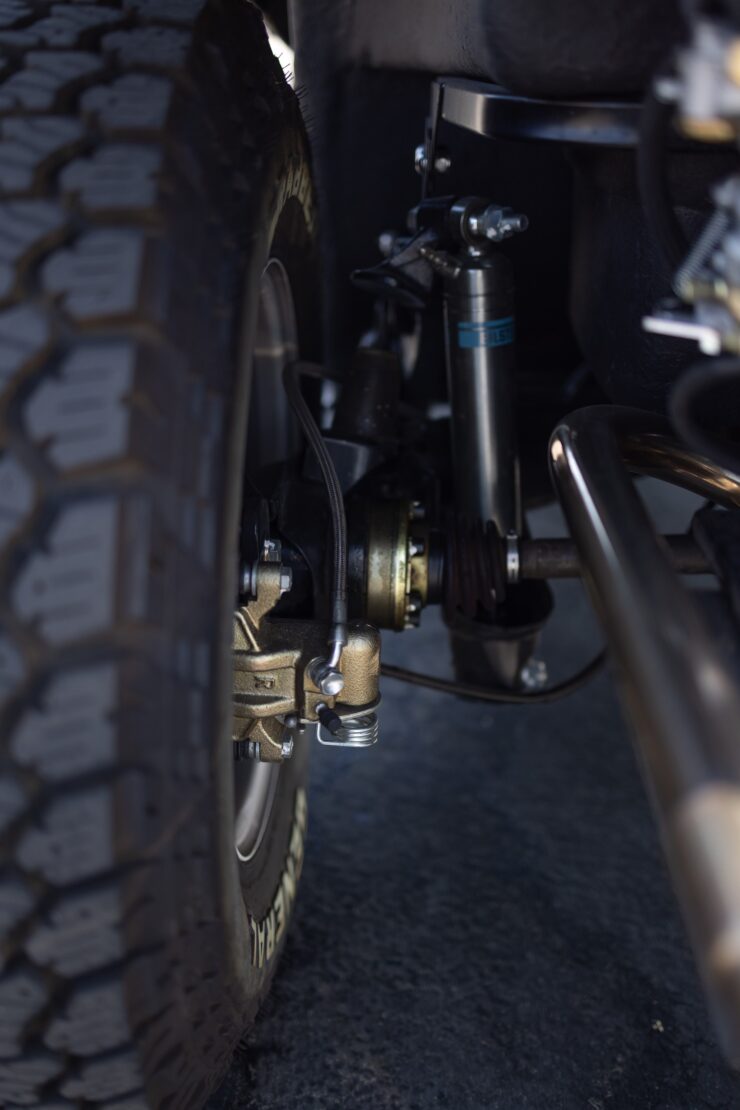
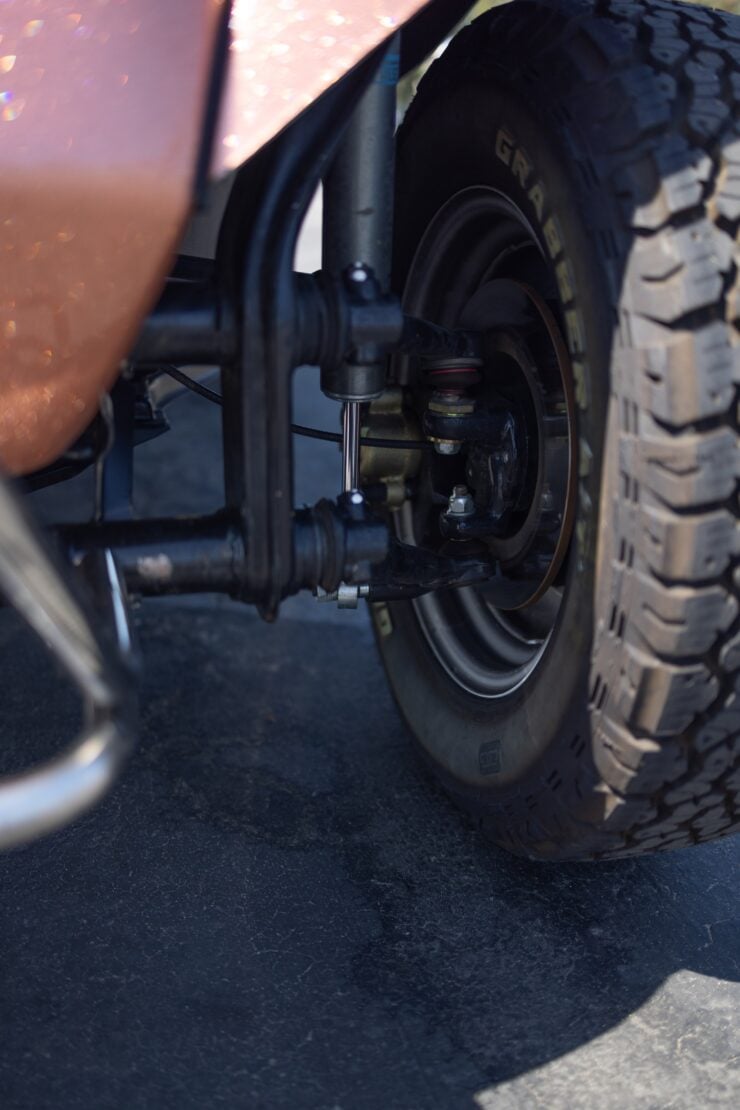
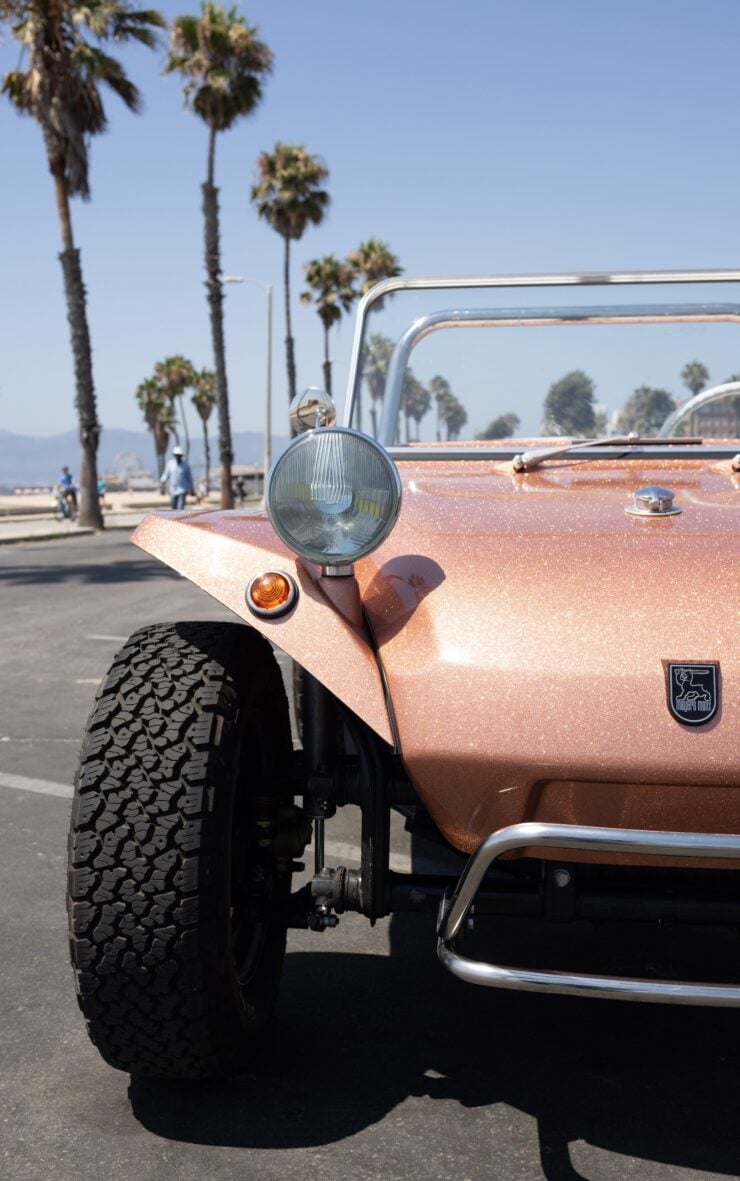
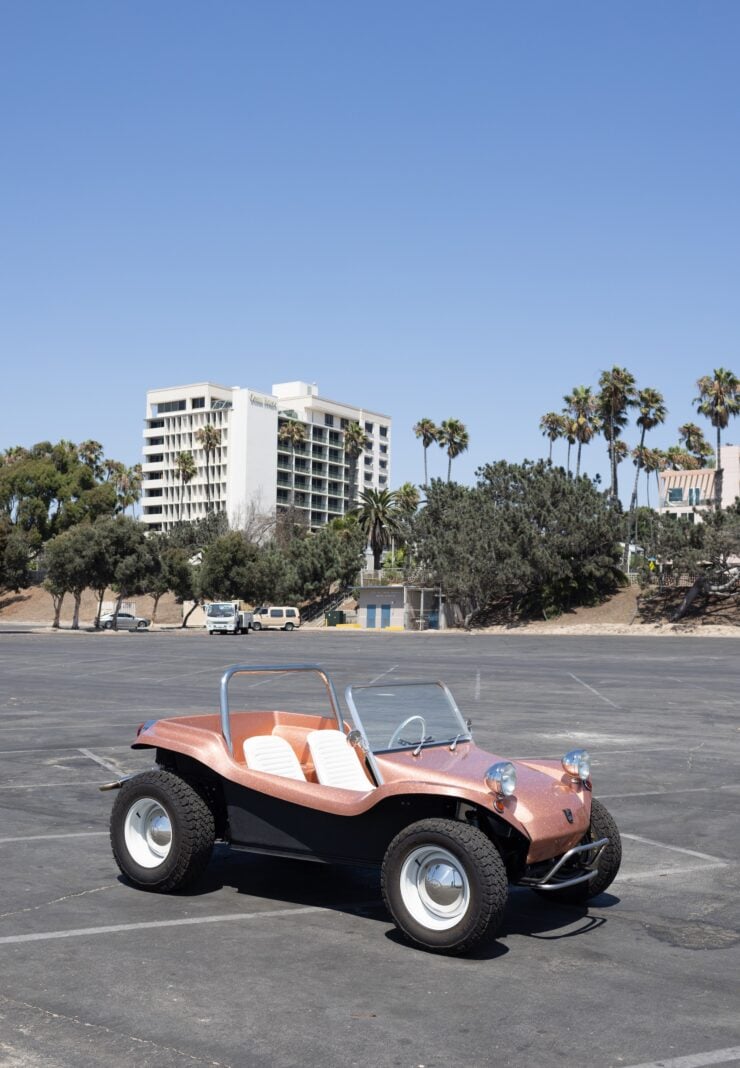
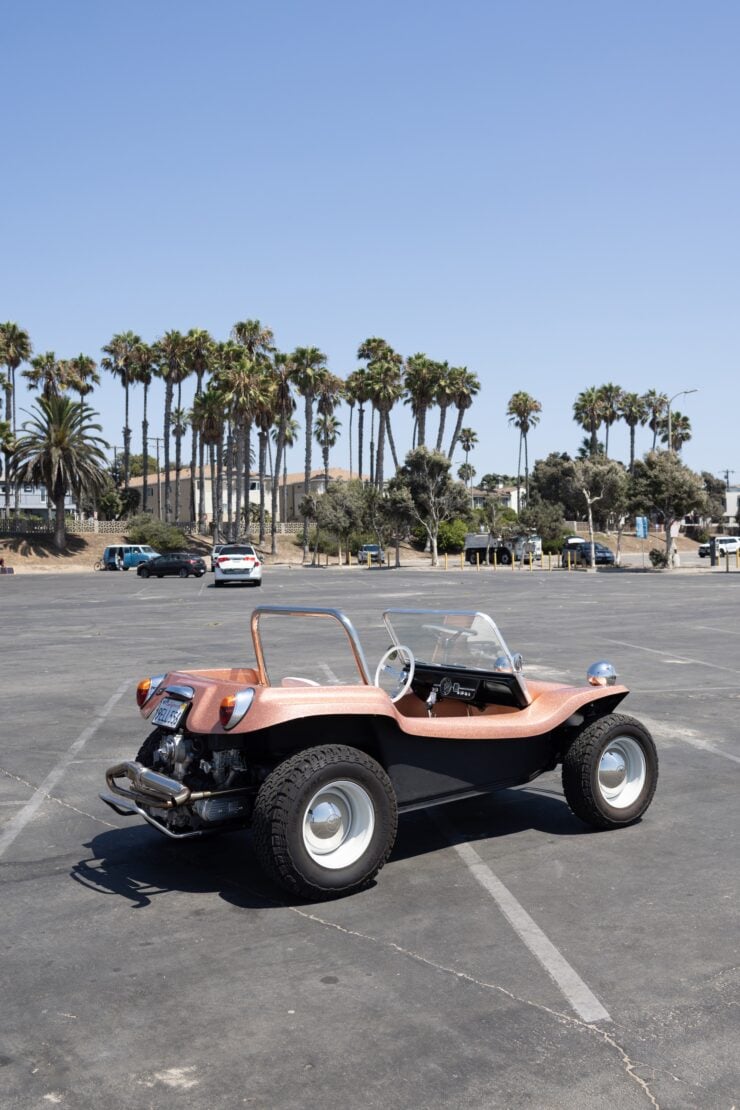
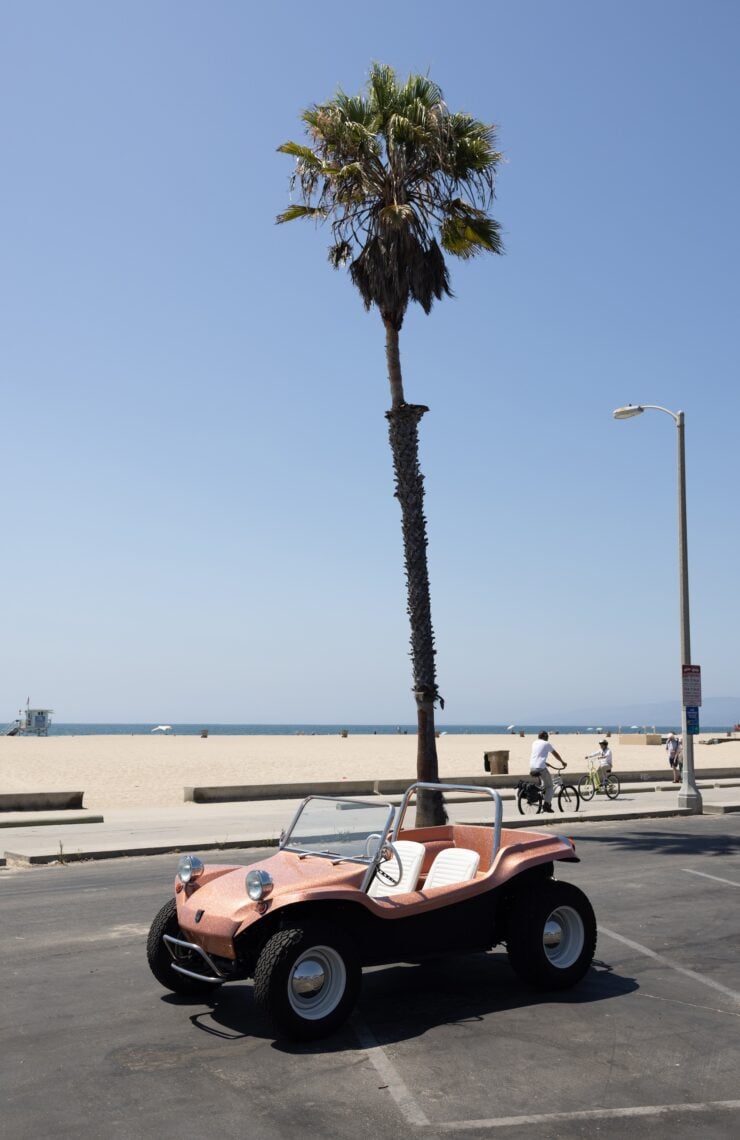
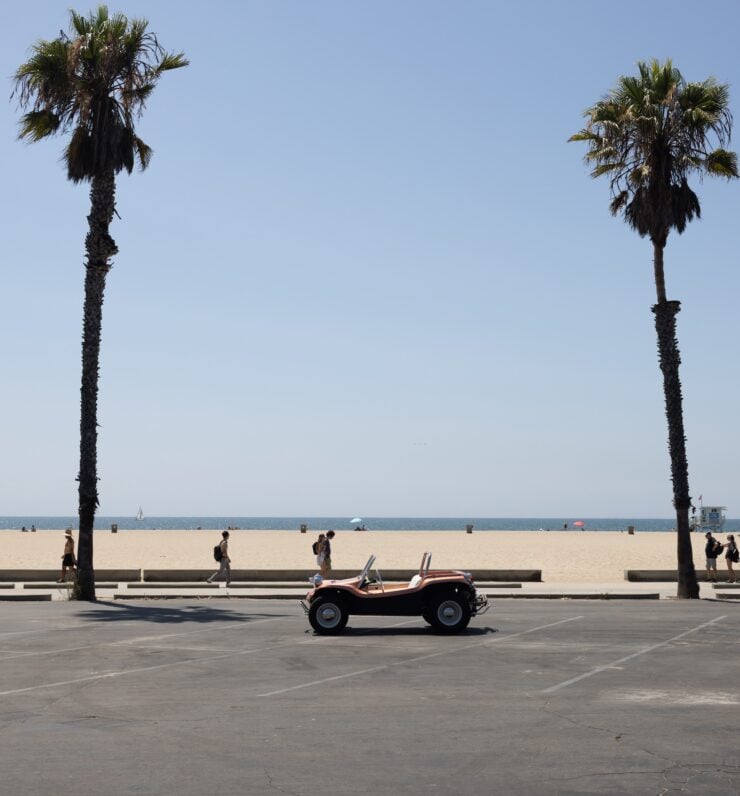
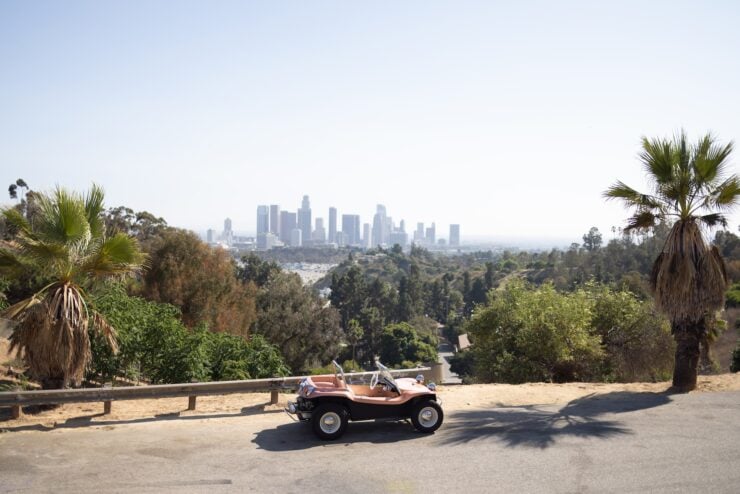
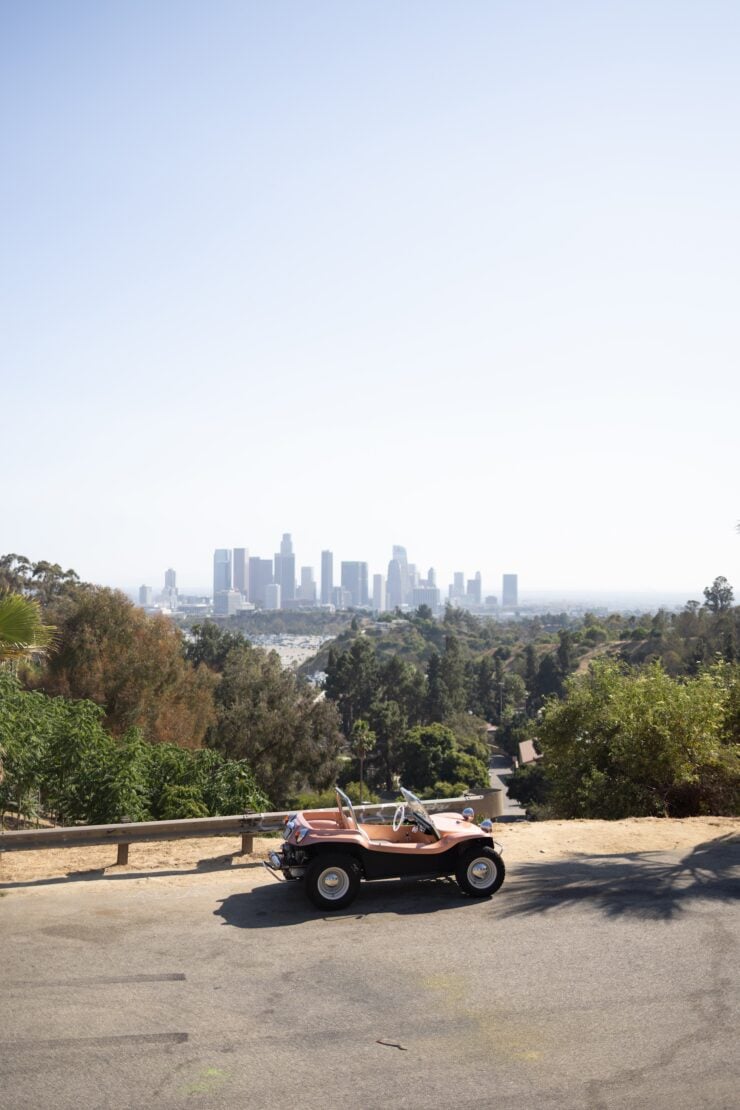
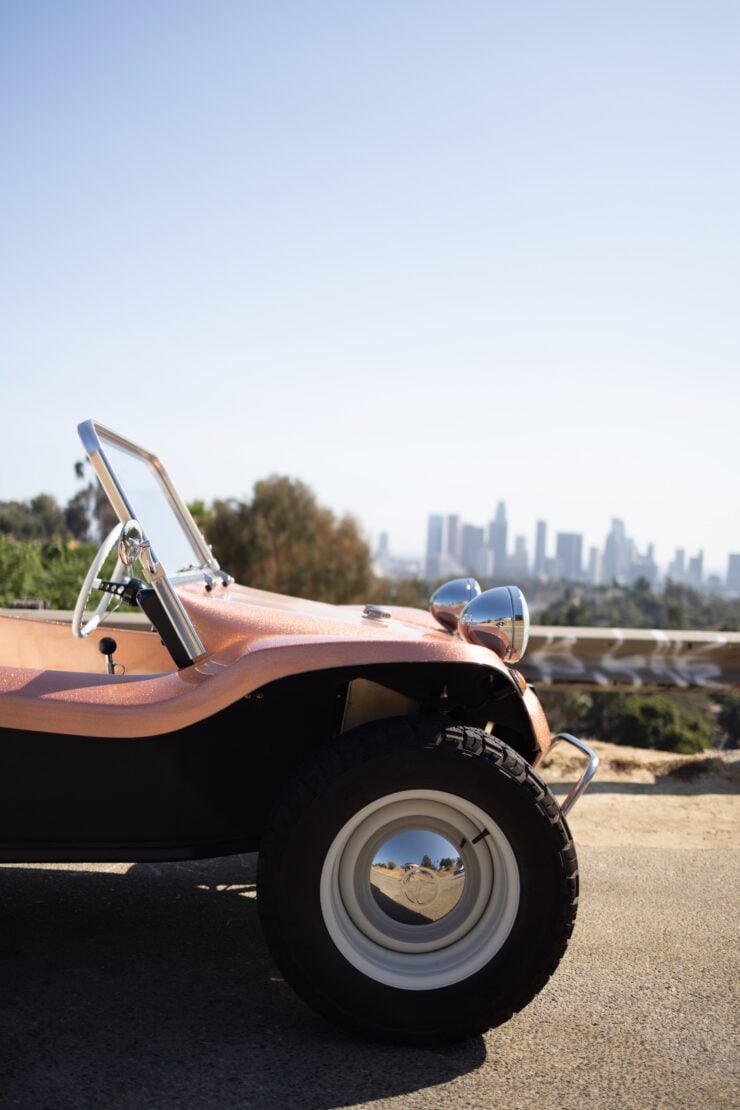
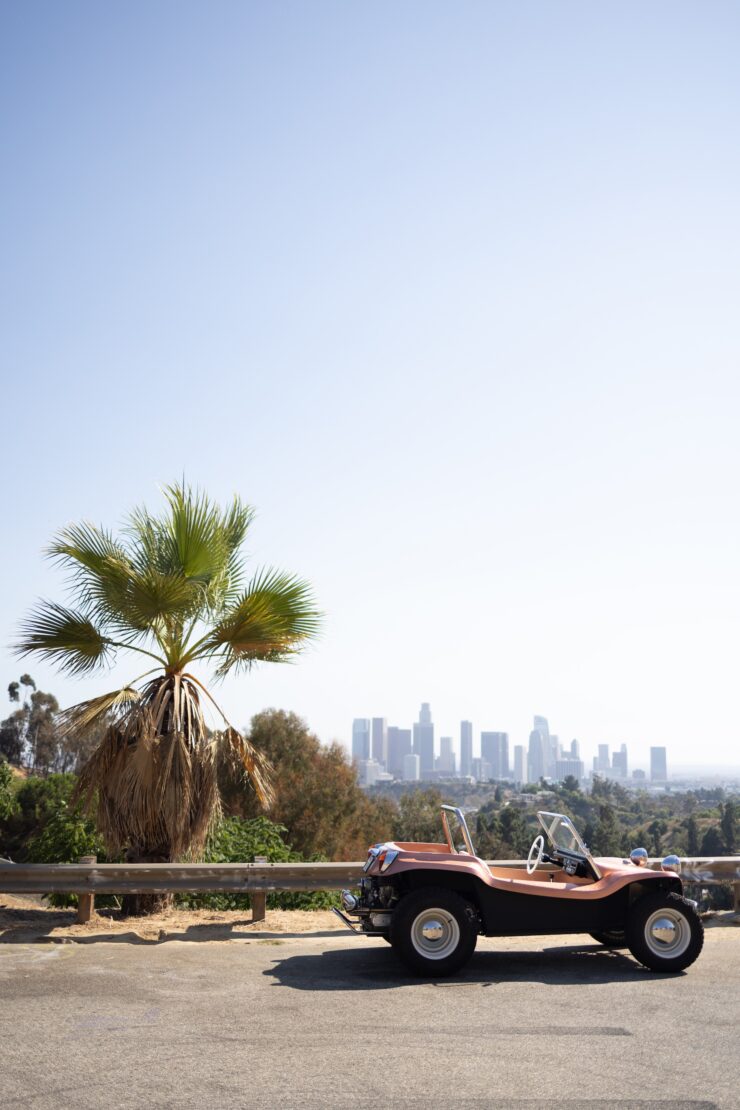
All images copyright 2024© Ben Branch

